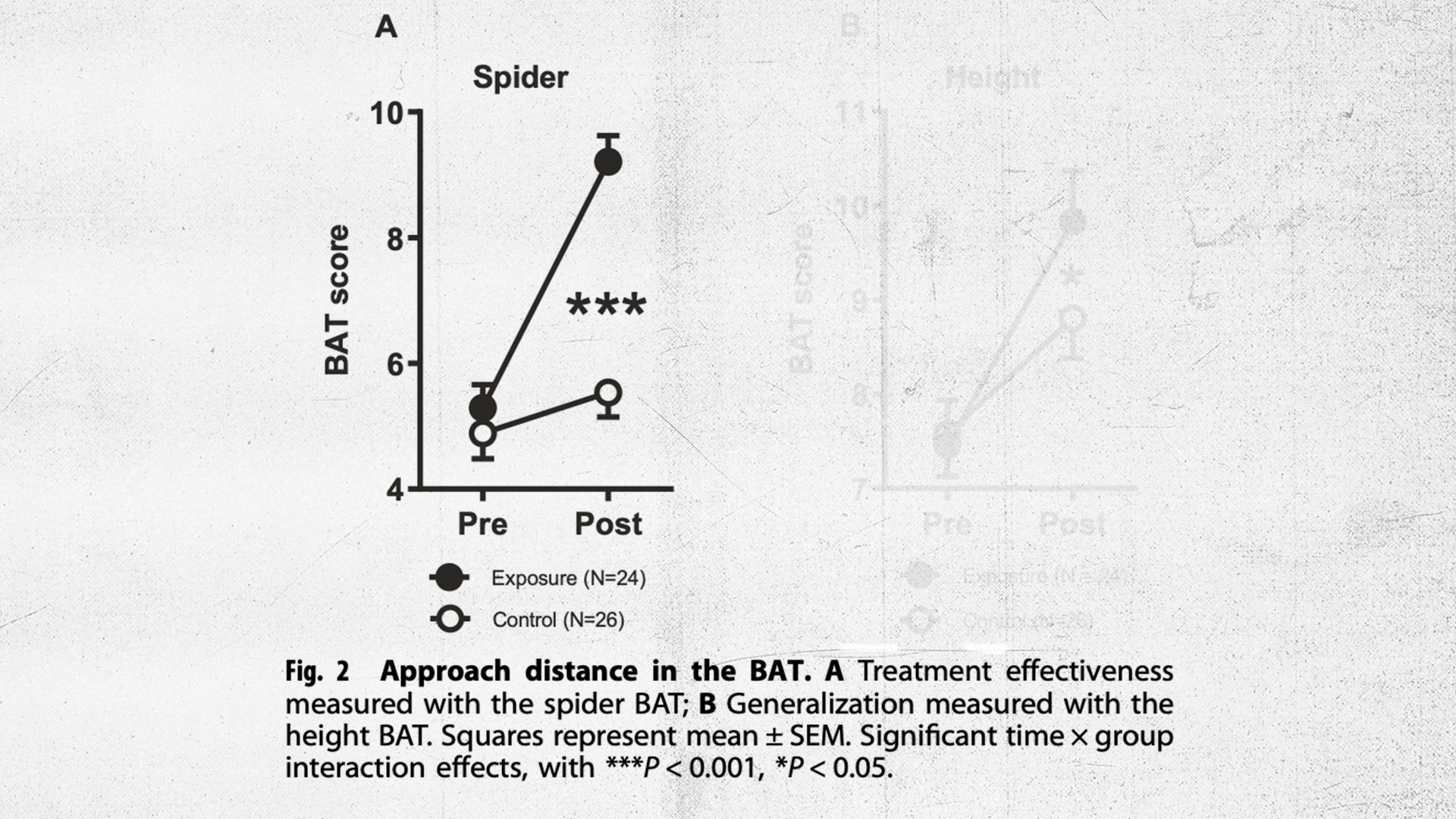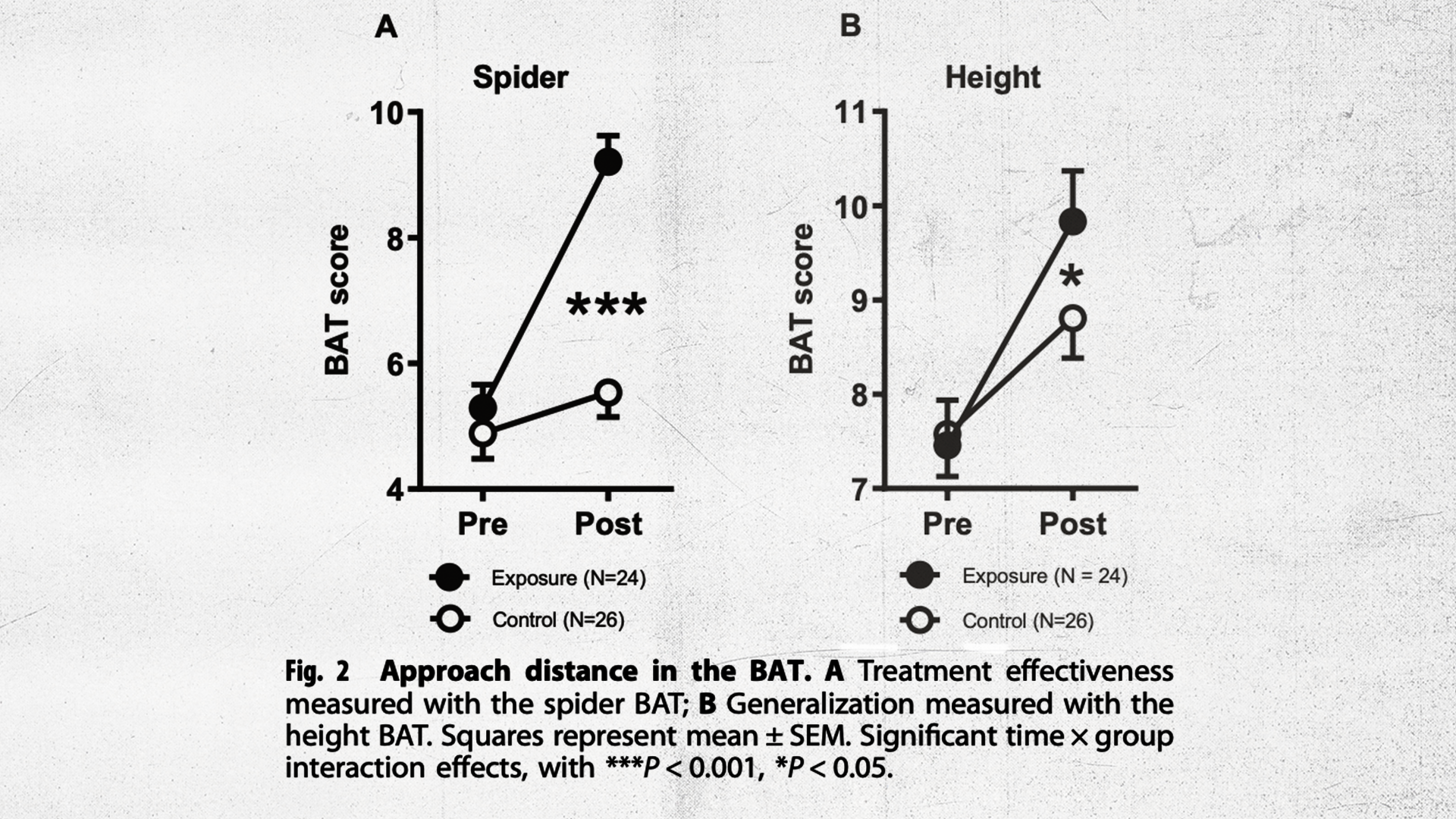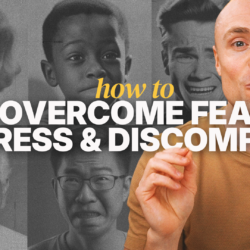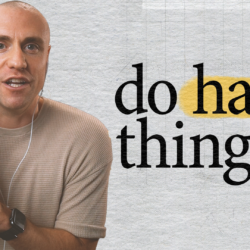written by: Trevor Ragan
Lucky for you, it has nothing to do with bats – but it does involve spiders.
Fear of Spiders Pre-test
The test is simple. Enter a room. In the back of the room there’s a large spider in a glass container. You have to approach the spider as quickly as possible and get as close to it as possible, until the fear becomes intolerable. This pre-test is used to measure your level of fear and avoidance of spiders.
Everyone is scored on a scale from 0 = refused to enter the room to 13 = transferred spider into a jar
Fear of Heights Pre-test
This is a similar pre-test but for heights. You climb higher and higher up a flight of stairs (where you can see all the way down to the ground), until you can’t handle it anymore.
These two tests provide a baseline for your fear of both spiders and heights.
Next you and the other participants are divided into two groups: Control and Exposure.
The Control Group does nothing. The Exposure Group takes part in the most effective approach to overcoming an exaggerated fear – exposure therapy.
Exposure Therapy: Spiders
Spider exposure therapy involves 14 steps, which increase in difficulty:
1. watching the spider in a glass at a distance of 150 cm
2. watching it in a glass at a distance of 30 cm
3. placing one hand on the jar close to the spider
4. placing both hands on the jar while it is 30 cm away from your face
5. looking at the spider in the opened jar
6. watching it crawl into a plastic container
7. touching it with a pencil
8. touching it with a thick glove
9. letting it walk over the thick glove while on your hand
10. touching it with a latex glove
11. letting it walk over the latex glove while on your hand
12. touching it with a fingertip
13. letting it walk over your hand with your arm covered, and finally
14. letting it walk on the bare skin of your hand
During the exposure therapy, your fear levels are measured on a scale of 0-100 for each step. Each step is repeated until a score of 30 or less is reached. The training is done when all steps have been performed or a duration of 2 hrs has been reached, whichever happens first.
Fear of Spiders Post-test
After the Exposure group is done with their therapy, both groups attempt the spider pre-test again.
Unsurprisingly, the Exposure Group does way better than they did on their pre-test. The Control group does about the same as they did on their pre-test.

This makes sense. Those participants who take part in the spider exposure therapy are better able to handle the stressful situation.
This is expected. What happens next, is not.
Everyone takes the heights test again – climb as high as you can before you can’t stand it anymore.

The Exposure Group that took part in the spider exposure therapy also improved their ability to face their fear of heights. Facing their fear of spiders actually helped them face an entirely different fear. This is amazing and important.
Why This Matters
We’ve all heard that to learn and grow, we need to face our fears and discomfort, which is true.
We’re nervous to volunteer for a project, but we do it anyway.
We feel weird about asking a question, but then we ask.
We stress about going to the workout, but we show up.
These choices to step out of our comfort zone usually lead to growth.
Understanding this research helps us see the deeper value of doing hard and uncomfortable things.
First, if we go to the workout, ask the question, work on the new project, or attend the workshop, we’ll experience the growth on the other side of discomfort.
And all of those choices to stretch are reps to build the muscle that helps us stretch in other hard and uncomfortable situations that we face.
Action Items
Treat this like a muscle:
Start small: Just like in the study, we can build up to this over time. We don’t have to face our biggest fear tomorrow, and we’re not going to squat 300 lbs during our first workout.
Pick something small that makes you uncomfortable—whether that’s raising your hand in a meeting, asking someone for help, attending a new workout class, or trying a new hobby. Each time you do this, you’re practicing the skill of facing discomfort. Treat each step like a “rep” that builds your capacity to handle bigger challenges later on.
Exercise the muscle: Actively seek out moments of discomfort as chances to practice. Now, instead of avoiding uncomfortable situations, you’ll start seeing them as valuable training for your brain—knowing each rep is making you stronger, not just in that moment, but in other areas of your life too.
Develop a better mindset towards stress: This video will help.
Also, here is a link to the full study if you’re interested.









